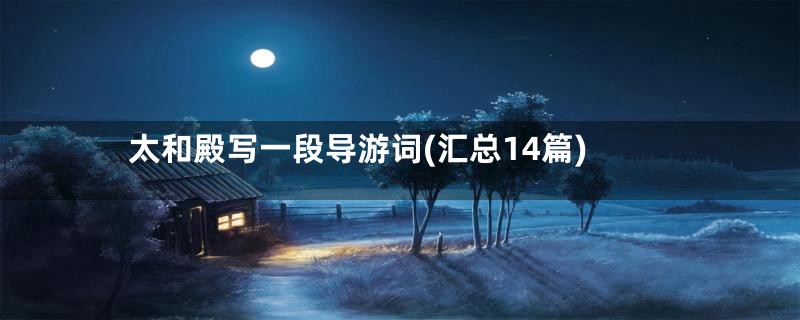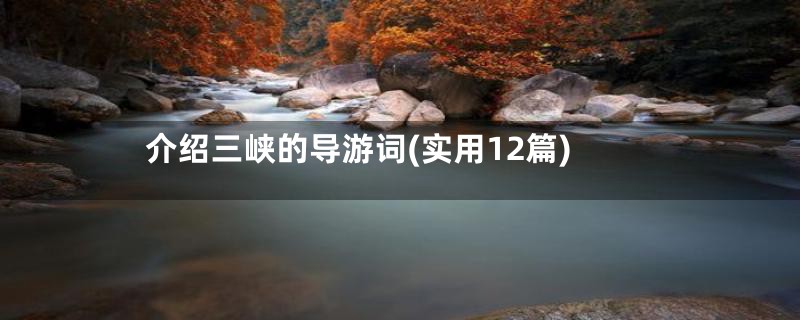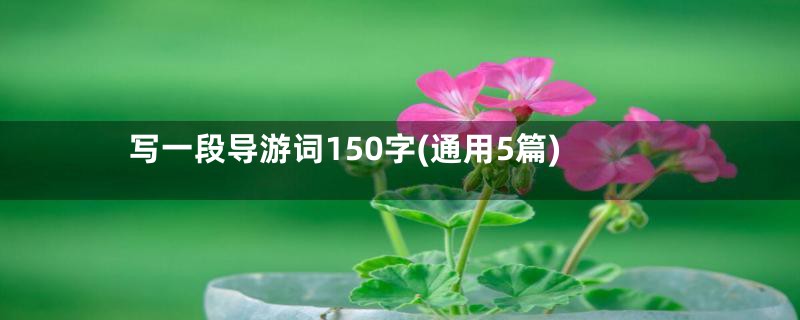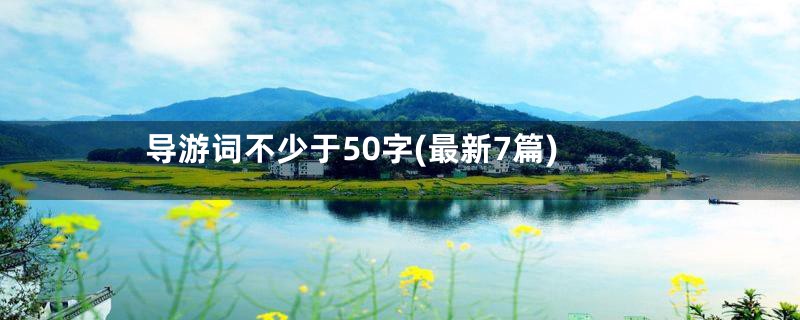甘肃平凉崆峒山导游词 第1篇
各位团友:
欢迎大家来到崆峒山游玩,我是你们今天的导游,叫我小林就好。大家来到这里之后,除了看风景以外,我觉得大家肯定也想知道一些历史,下面就由我为大家介绍。
崆峒山位于甘肃省平凉城西15公里,泾河上游主流与其北岸支流后峡河之间。长100公里,平均宽15公里,海拔1870~2100米。最高峰山势陡峻,树木葱茏,形成北西西走向的一道天然绿色屏障,故名翠屏山,海拔2123米。
地质构造上属小关山逆断层,垂直断距约700米,上三叠统延长群的褐紫色与绿色砾岩及白垩纪底砾岩等垂直节理发育,经侵蚀形成许多岩崖峡谷及奇峰绝壁等特殊地貌。
山顶有两级老夷平面:2100米的香山顶,上覆第三纪红层;1900米左右的一级经切割为东、西、南、北、中“五台”。中台突起,诸台环列,各有奇势胜景。
合天台、插香台与灵龟台,号称“八台”,与“四岭”(凤凰岭、狮子岭、苍松岭与棋盘岭)、“二峰”(蜡烛峰与雷声峰),同为崆峒山地貌的自然奇观。
诸平台与山麓带先后修建了佛、道二教基地的“九院”、“十二宫”,共有寺观42处,大多集中分布在“五台”区,形成规模宏大的建筑群。现仅保存_寺的宋石经幢,十方院的元蟠龙石柱,东台宝庆寺的元代石壁及明建凌空塔,均为省级文物保护单位。
崆峒山多特殊文化胜迹,山上有广成子洞,山麓有问道宫和广成泉。又有望驾山及撒宝岩,传为望秦始皇驾临及始皇巡幸撒宝处。东台悬崖的岩洞有玄鹤洞和青龙洞(一名归云洞),亦为崆峒名胜。1980年在山南的崆峒前峡修成崆峒峡水库,水电站装机容量1890千瓦,具有发电、养鱼、灌溉及游览等综合效益。有直达中台的登山公路。
下面我为大家简单介绍一下崆峒山佛教僧徒的生活。在原始佛教时期,僧众的日常行事一般是出外化缘,各自修行。修行的方法有两项:一是学习教理,主要是听佛说法,互相讨论;二是修习禅定,指打坐,或者经行(经行是在林间来往徘徊)。后来寺院中有了佛像,经典记录成文字以后,才出现礼拜供养和读诵经典的礼仪。
根据佛所制定的戒律,僧众于每月望晦(农历十五日、三十日)两日齐集在_寺,共诵《戒本》,自我检查有无违犯戒律之事。如有违犯,要按照情节依法忏悔。
在全年之中,僧徒必需有的三个月安居在_寺之中,专心修道,不得随意他往。佛教最大的节日有两天:一是四月初八——佛诞日;二是七月十五——自恣日。这两天都叫作“佛欢喜日”。
在佛诞日要举行“浴佛法会”,就是在大殿用一水盆供奉太子像(即_佛诞生像),全寺僧侣以及信徒要以香汤沐浴太子像,作为佛陀诞生的纪念。
东台,最初是元朝安西王忙哥刺依王相商挺请求,召京城西域喇嘛槊里吉察思揭兀住持重建,于至元十五年(1278年)秋八月落成,所有费用由安西王出资供给。建成后“为殿为堂,轮涣晕飞,金碧灿烂”。
历经补葺,于民国年间存大殿和商挺撰书的创修崆峒山宝庆寺碑记碑,今废。原大殿内彩塑十大魔王逼真生动,线条流畅自然,堪称一绝。遗憾的是_期间都已毁坏。
门楣上东台二字以及两边的楹联:“仙山、神山、道山、佛山、儒山、山光唯真;晴景、雨景、雪景、日景、月景、景色独俱”。关圣帝君庙内供奉的是“三国”故事中的关云长与他的手下大将周仓、关平。
提起关云长,在中国几乎家喻户晓,人人皆知,想当年,关云长千里走单骑,过五关、斩六将,是何等的威风!关云长一生除了英勇善战外,还与刘备、张飞“桃源三结义”,一心扶持刘备,忠心耿耿,尽忠报国,义重如山。
他死后,全国各地都修建庙宇,供他的神像,并称他为“关公”、“关帝”、“武圣”等。关羽是我国唯一一位佛、道、儒三教共同供奉的尊者,佛教称伽蓝菩萨,是寺院的守护神;道教奉为武财神、副玉皇;儒家则尊称为武圣人。
东台是观日出、云海及平凉市夜景的佳地,在东台绝壁上就有玄鹤洞,距地面500米。民间传说,玄鹤原是侍候广成子的一对童男童女,天长地久,两人便产生爱慕之情,虽蒙师傅教诲,但痴心难改。
后来广成子修成仙体,将回仙界,两位童子俗缘未了,一心想留在崆峒山,于是广成子随手一指,在这绝壁上为他俩留下一个栖身的仙洞,将他们点化成一对玄鹤,并告诫他们:留在凡间不能随心所欲,更不能干离经叛道之事,要体察民情,帮助善良的人。在山脚上还有问道宫,相传是轩辕黄帝来崆峒山问道于广成子的落脚处。
好了,我们今天就先了解到这里。说了那么多,相信大家对它肯定是充满了兴趣的。那就让大家自行解散,去感受一下崆峒山的魅力吧。不过在这个过程中要注意安全,不要乱扔垃圾哦!
甘肃平凉崆峒山导游词 第2篇
崆峒山位于甘肃省平凉市城西12公里处,东瞰西安,西接兰州,南邻宝鸡,北抵银川,是古丝绸之路西出关中之要塞。
崆峒山景区面积84平方公里,主峰海拔2123米,集奇险灵秀的自然景观和古朴精湛的人文景观于一身,具有极高的观赏、文化和科考价值。自古就有“西来第一山”、“西镇奇观”和“道源圣地”之美誉。
崆峒山属六盘山支脉,是天然的动植物王国,有各类植物1000多种,动物300余种,森林覆盖率达90%以上。其间峰峦雄峙,危崖耸立,似鬼斧神工;林海浩瀚,烟笼雾锁,如缥缈仙境;高峡平湖,水天一色,有漓江神韵。既富北方山势之雄伟,又兼南方景色之秀丽。凝重典雅的八台九宫十二院四十二座建筑群七十二处石府洞天,气魄宏伟,底蕴丰厚。
古往今来,崆峒山吸引了众多的风流才俊。被中华民族尊为人文始祖的轩辕黄帝亲自登临崆峒山,向智者广成子请教治国之道和养生之术,黄帝问道这一千古盛事在《庄子·在宥》和《史记》等典籍中均有记载;秦皇、汉武因“慕黄帝事”、“好神仙”而效法黄帝西登崆峒;司马迁、王符、杜甫、白居易、赵时春、林则徐、谭嗣同等文人墨客也留下了大量的诗词、华章、碑碣、铭文。崆峒武术与少林、武当、峨嵋、昆仑等武术流派驰名华夏。
甘肃平凉崆峒山导游词 第3篇
Friends, Kongtong mountain is known as the religious holy land of Taoism and Buddhism in Northwest China. It has 42 buildings and 72 stone caves. According to historical records, after the unification of the Sui Dynasty, Kongtong mountain gained a stable period, so in the Tang Dynasty, monks and Taoists successively created temples and palaces. Later, it was built or rebuilt in the song, yuan, Ming and Qing Dynasties and even in the Republic of China. According to historical records, in its heyday, there were 42 fanchas and more than 650 houses. The prominent ones are _eight platforms, nine palaces and twelve courtyards_. It is difficult to find out how many buildings there were in the heyday, but the old saying of _eight platforms, nine palaces and twelve courtyards_ actually means something. Batai refers to the East, West, South, North and middle five stations, as well as the Baxian station, Linggui station and Zhao Shichun reading station. Nine palaces refer to Wen Wen palace, Wang Mu palace, Zixiao palace, feisheng palace, Nanya palace, jingle palace, Taiqing palace, Yuzhen palace and descendants palace. Twelve courtyards refer to Shuhua temple, from? There are many explanations from ancient times to modern times, but there are three kinds of textual research: first, there are many caves in Kongtong mountain, the most famous of which are Xuanhe cave and Kongtong cave. These caves either lie on the surface of the earth or on cliffs, because most of them are empty caves; Secondly, Kongtong mountain is the birthplace of Taoism, which emphasizes the empty and inaction philosophy of Taoism; thirdly, the word Kongtong is not a word of mountain in ancient times. It was originally a phonetic interpretation of the language of a clan tribe. It expresses the general concept of a location or all tribes in this area. Erya, the first dictionary in China, records that _beidaidou is an empty tree._ It means that the sky is just below the Big Dipper. Another ancient book, Jizhong ZhouShu, further explains: _the lower tribes of Daxia, Shache, Yueshi, Kongtong and guzang in the north belong to Kongtong._ After the development and extinction of the tribes, the famous mountains in the central area were used to refer to the mountains. In fact, the ancients had a very clear concept of this region. From Li Bai and Du Fu in the Tang Dynasty, LV Daqi in the Ming Dynasty to Kongtong in Lin Zexu's poems in the Qing Dynasty, this region generally refers to a large area, starting from Ruyang in Henan Province in the East and ending in Hexi in Gansu Province in the West. Pingliang, the central area, may be the residential area of the ten clans in the Shang and Zhou dynasties, so it is called Kongtong.
Please keep up with the line. In front of you is the ticket office, Chaotian gate. We can see that there are four stone goats on both sides of Chaotian gate. Why? Because it was very difficult for people to transport the building materials to the mountain by building palaces, temples and roads at first. So people found that goats had even hooves and were good at walking small paths. From then on, goats undertook the work of carrying materials. In order to commemorate the contribution of goats to Kongtong mountain, later generations molded them Here it is.
Chaotianmen was built in the Ming Dynasty. The three characters _Chaotianmen_ on the lintel were written by Mr. Zhang Xiumin, a famous calligrapher in Pingliang. The three characters _Kongtongshan_ were inscribed by Mr. Qigong, a famous calligrapher in contemporary times. The couplets on both sides of _Yunshan steps to the sky, Wuhai floats to Chayi daomen_ were inscribed by Mr. Ouyang Zhongshi, vice chairman of China Calligrapher Association. Here is the Taoist Dharma protector Wang Lingguan. Wang Lingguan is the Taoist Dharma protector. Wang Lingguan, formerly known as Wang Ye, is sa Shoujian, a disciple of Xujing immortal, the 30th generation of Heavenly Master in Xihe. He burned Wang Ye with fire. The king refused to accept the evil, and told the heaven court. The Jade Emperor gave the wise eye and the Golden Whip.
As the saying goes: _Wang Lingguan, keep peace_, then everyone hurry through Chaotian gate to seek peace!
There are two stone tablets on the cliff. On the left is a poem engraved by Li Ying, a county officer of Pingliang county during the reign of Emperor Kangxi of the Qing Dynasty, chanting Xuanhe, _the crane of Yuan Dynasty flies high and the sky is clear. There are immortal birds left for thousands of years. What's the matter now?_ it is said that Xuanhe is the immortal bird of Kongtong mountain. On the right is the portrait tablet of Guanyin presented by Mr. Wu Lengxi in 1994, which is called Guanyin Bodhisattva by Buddhism. Taoism is worshipped as Cihang Taoist, and is a venerable person worshipped by both Buddhism and Taoism. This stone tablet is also the only blue stone tablet in Kongtong mountain. From now on, we need to climb 669 steps to reach Huangcheng. Because there are many and steep steps, we must pay attention to safety. We can walk without looking at the scenery.
This two-story three Ying grotto building is Yaowang cave, which was built in the Ming Dynasty. It is dedicated to Sun Simiao (middle), Bian que (left) and Hua Tuo (right). Sun Simiao was born in the first year of kaihuang of Sui Dynasty and died in the first year of Yongchun of Tang Dynasty. He lived 102 years (or 141 years). He is a famous medical scientist and pharmacist in the history of China and even the world. In history, it was regarded as the _king of medicine_. Sun Simiao is a famous doctor of ancient and modern medical ethics, especially his emphasis on medical ethics, which is a good story for later generations. In his famous book qianjinfang, the medical ethics of _great medical sincerity_ is also placed in an extremely important position, with special topics and discussions. Sun believes that _human life is very important, and there are thousands of gold. One side helps it, and the virtue is more than that._ therefore, his two works are titled with the word _thousands of gold_, which is called _thousands of gold Yaofang_ and _thousands of gold Yifang_. Qianjin Yaofang is the earliest medical encyclopedia in China. From basic theory to clinical practice, there are all kinds of theories, methods, prescriptions and medicines. One is ancient books and records, the other is folk prescription. Qianjin Yaofang has made a great contribution to dietotherapy, health preservation and pension. There are many stories about him. It is said that he once went to Kongtong mountain to practice medicine for three years, where he treated people's diseases, regardless of the poor, the rich and the poor. He treated people equally, and his medical ethics was very noble. He also cured the tumor on the back of the Dragon King of Jinghe and took out the broken bone stuck in the throat for the tiger. In order to thank Sun Simiao for his kindness, the Dragon Tiger acted as his mount. The statue here is based on the legend of _sitting tiger and needle dragon_. Hua Tuo (about the second century to the beginning of the third century .) was born in peiguo Qiao (today's Hao County, Anhui Province). When he was young, he went to Xuzhou to visit his teachers and study, _and he also knew how to cultivate his nature._. Cao Cao often suffered from head wind vertigo and was cured by Hua Tuo's acupuncture. However, Hua Tuo was honest and didn't want to serve Cao Cao, so he arrested him and killed him cruelly. Hua Tuo is also the first medical scientist who invented and used Mabei powder for general anesthesia in the world medical history. After compiling _Wuqinxi_, he sorted out _qingnangjing_ in prison.
Bian que was a medical scientist in the Warring States period. Surnamed Qin, named Yue people, Qi Bohai mo (now Hebei Renqiu) people. Bian que is the originator of traditional Chinese medicine. Because of his excellent medical skills, Bian que cured many diseases for the common people. The working people of Zhao state gave him the title of _Bian Que_. On the basis of summing up the medical experience of predecessors, Bian que created and summed up the methods of looking (looking at the complexion), smelling (listening to the voice), asking (asking about the condition) and cutting (according to the pulse) to diagnose the disease. Among the four diagnostic methods, bianque is especially good at inspection and palpation. At that time, bianque's pulse cutting skills were superb and famous all over the world.
Along my right hand side, you can see this small mountain peak called candle peak. When winter snow melts in spring, the snow on the mountain peak slowly melts down like a candle, which is very beautiful. This scene is known as one of the twelve landscapes of Kongtong mountain - spring melting candle. Luo Chao, a poet of the Ming Dynasty, wrote a poem praising: _if you don't travel early in the mountains, you will be in good condition for your youth. I'm afraid that the moonlight will move and the candle will be bright at night._.
甘肃平凉崆峒山导游词 第4篇
In the morning, my father told me that my family was going to visit Kongtong Suddenly, my mood is particularly Put on your clothes and When I opened the curtain, I saw that the sky was clear and sunny, which made me even more After we packed our bags together, we sang and laughed in the We really wanted to get to our Time passed in the laughter, we finally came to the long-awaited Kongtong
We came to the gate of Kongtong First of all, the three powerful characters _Kongtong mountain_ glittered in the At the gate is a large square with a sea of people and tourists from all over the There is a big TV in the center of the square, which introduces the scenery of the scenic
Entering the gate, we took the cableway to the scenic spot on the hillside - The scene in front of me made me Looking around, the steep stone wall is full of There are straight pine trees, tall and straight birch trees, and many unknown They are really colorful! Some are golden; some are red like fire; and some are They are so beautiful!
We continued to walk up the ladder and looked at the trees in front of We decided to collect different My mother and sister also decided to take part in the leaf collecting We'll collect this one and that Some of these leaves are like chicken feet, some are like lotus leaves, and others are not sure what they look Their different shapes make us dazzled and
In the evening, we went down the Although we didn't climb to the top of the mountain this time, we were I believe that in the near future, my family will go to Kongtong mountain and take my sister to climb to the top of the
甘肃平凉崆峒山导游词 第5篇
Ladies and gentlemen
Welcome to Kongtong mountain. I'm your guide today. Just call me Xiao Lin. After you come here, in addition to seeing the scenery, I think you must also want to know some history. Let me introduce it to you.
Kongtong mountain is located 15 kilometers west of Pingliang City, Gansu Province, between the mainstream of the upper Jinghe River and its north bank tributary houxia river. It is 100 km long and 15 km wide on average, with an altitude of 1870-2100 M. The highest peak is steep with luxuriant trees, forming a natural green barrier in the northwest direction, so it is named Cuiping mountain, with an altitude of 2123 meters.
In geological structure, it belongs to xiaoguanshan reverse fault with a vertical fault distance of about 700 meters. The brown purple and green conglomerates of Yanchang group of Upper Triassic and Cretaceous bottom conglomerates and other vertical joints are developed. After erosion, many cliff canyons and Qifeng cliffs and other special landforms are formed.
There are two old planation levels on the top of the mountain: the top of Xiangshan, 2100 meters, is covered with Tertiary red beds; the first level, about 1900 meters, is cut into _Wutai_ in the East, West, South, North and middle. The central platform is protruding, and all platforms are in a circle, each of which has its own unique potential.
Hetiantai, chaxiangtai and lingguitai are known as _Batai_. They are the natural wonders of Kongtong mountain, together with _four mountains_ (Fenghuangling, shiziling, cangsongling and qipanling), and _two peaks_ (candle peak and leishengfeng).
Nine temples and twelve palaces of Buddhism and Taoism have been built successively in the platforms and foothills. There are 42 temples, most of which are concentrated in the _Wutai_ area, forming a large-scale architectural complex. At present, only the Song Dynasty stone Scripture building of endor._.
After repair, the memorial tablet of Baoqing temple in Kongtong mountain, which was written by Cunda hall and Shangting in the Republic of China, is now abandoned. In the original hall, the top ten demons are vivid and lifelike, with smooth and natural lines. Unfortunatelyxxx All of them have been destroyed.
Dongtai on the lintel and the couplets on both sides: _Xianshan, Shenshan, daoshan, Foshan, Rushan, shanguangweizhen; sunny scenery, rainy scenery, snowy scenery, sun scenery, moon scenery, all alone_. Guan Yunchang and his generals Zhou Cang and Guan Ping in the story of the three kingdoms are worshipped in the temple.
Guan Yunchang is almost a household name in China, and everyone knows it. In those days, Guan Yunchang rode alone for thousands of miles, passed five passes, and killed six generals. In addition to being brave and good at fighting, Guan Yunchang also made _three friends in Taoyuan_ with Liu Bei and Zhang Fei. He wholeheartedly supported Liu Bei and was loyal to his country.
After his death, temples were built all over the country for his statues, and he was called _Guan Gong_, _Guan Di_, _Wu Sheng_ and so on. Guan Yu is the only venerable of Buddhism, Taoism and Confucianism in China. Buddhism is called Kalan Bodhisattva and is the patron saint of the temple. Taoism is regarded as the God of wealth and vice Jade Emperor. Confucianism is honored as the sage of martial arts.
Dongtai is a good place to watch the sunrise, the sea of clouds and the night view of Pingliang City. There is Xuanhe cave on the cliff of Dongtai, 500 meters above the ground. According to folklore, Xuanhe used to be a pair of boys and girls who served guangchengzi. They fell in love with each other for a long time. Although they were taught by their master, their infatuation could not be changed.
Later, guangchengzi became an immortal and returned to the fairyland. The two boys wanted to stay in Kongtong mountain, so guangchengzi left a fairy cave for them on the cliff, changed them into a pair of Xuanhe, and warned them: they should not stay in the world as they want, let alone do things that are deviant from the classics. They should understand the people's feelings and help the good people. At the foot of the mountain, there is the palace of asking questions. It is said that the Yellow Emperor Xuanyuan came to Kongtong mountain to ask where Yu guangchengzi had settled.
Well, let's get to know that first today. Having said so much, I believe everyone is full of interest in it. Let's dissolve ourselves and feel the charm of Kongtong mountain. But in this process, we should pay attention to safety, do not litter Oh!
甘肃平凉崆峒山导游词 第6篇
全国各地的人们,大家好,我的名字叫杨悦蓉,今天让我当一次小导游吧!介绍一下我的家乡平凉名牌,崆峒山。
崆峒山是一个非常有意思的地方,那里风景优美,如同仙境一般。你信不信?那就看我的介绍吧!
我先简介一下,崆峒山位于甘肃省平凉市,这是一个美丽的城市,各民族团结友爱,互相帮助,共同建设着新的美好的平凉,平凉人民热情好客,欢迎你们在平凉做客,游览平凉的名牌崆峒山。
崆峒山东瞰西安,西接兰州,南邻宝鸡,北抵银川。是古丝绸之路要冲,自然景观奇险灵秀,人文景观古朴精湛,具有极高的观赏,文化,科考价值。自古就有“西来第一山”、“西镇奇观”之美誉。崆峒山是天然的动植物王国,森林覆盖率90%以上,有各类动植物1300多种。景区面积84平方公里,其间峰峦雄峙,危崖耸立,似鬼斧神功;林海浩荡,烟笼雾锁,如缥缈仙境;高峡平湖,山水一色,有漓江神韵。
在山脚下往山头上望,云遮雾涌,神秘莫测,渐渐地雾越变越浓上面似乎是皑皑白雪。在半山腰往下看一眼望不到谷底,往山顶看真是雾锁山头山锁雾,山套山,雾涌雾。由于那里树木茂盛,这里最壮观的景色还是通天桥了。通天桥它长约五十米左右。地势险峻,景观奇特。这里最壮观的景色还是通天桥了。通天桥它长约五十米左右。地势险峻,景观奇特。走在桥上我们就像是腾云驾雾的神仙。
这就是崆峒山,还有许多许多的名胜古迹,如塔院,皇城,雷声峰等等。如同仙境一般。如果你有时间一定要到崆峒山走走看看。
如果你没有来过崆峒山,我们非常欢迎你来游览做客如果你有时间一定要到崆峒山走走看看吧。
甘肃平凉崆峒山导游词 第7篇
首先,我们要带你们去崆峒山的缆车卖票处,你会看见那里的缆车是由红与白组成的,形状是正方体,四面都是玻璃,里面是长椅子,坐在上面,你会看见底下山清水秀,风景优美,还可以看见山下的崆峒水库,湖水清澈,水波荡漾,在阳光的照射下,水面上银光闪闪,美丽极了。
缆车到了崆峒山上,进入眼帘的石碑上,上面写着崆峒山这三个大字,北边是塔院,南边是皇城,东边是香山。
我们先带你去皇城吧!首先,你得先上天梯,天梯好像足足1000多个台阶,你得上好一会,终于上到山顶了,你会看见广成子洞、问道宫、广成泉
然后,我们去塔院,你到了那里,会特别轻松,我会先给你买一瓶茶喝,再让你看看戏,再带你去少林寺的宝塔上,宝塔下面有一个静心院,这里是山上佛教的聚集点。
最后,我会带你去最高的香山,路过天仙宫、黄龙泉、静乐宫、寒山寺等景点。工夫不负有心人,我们最后终于登上了到崆峒山的最高峰--香山。香山海拔2123米。站在山顶往下望,崆峒山美景尽收眼底。
崆峒山上有佛、道、儒三教并存。在山上休息了一会就从前山下山了。
好了,这次的旅游已经结束了,欢迎你们下次再来。










